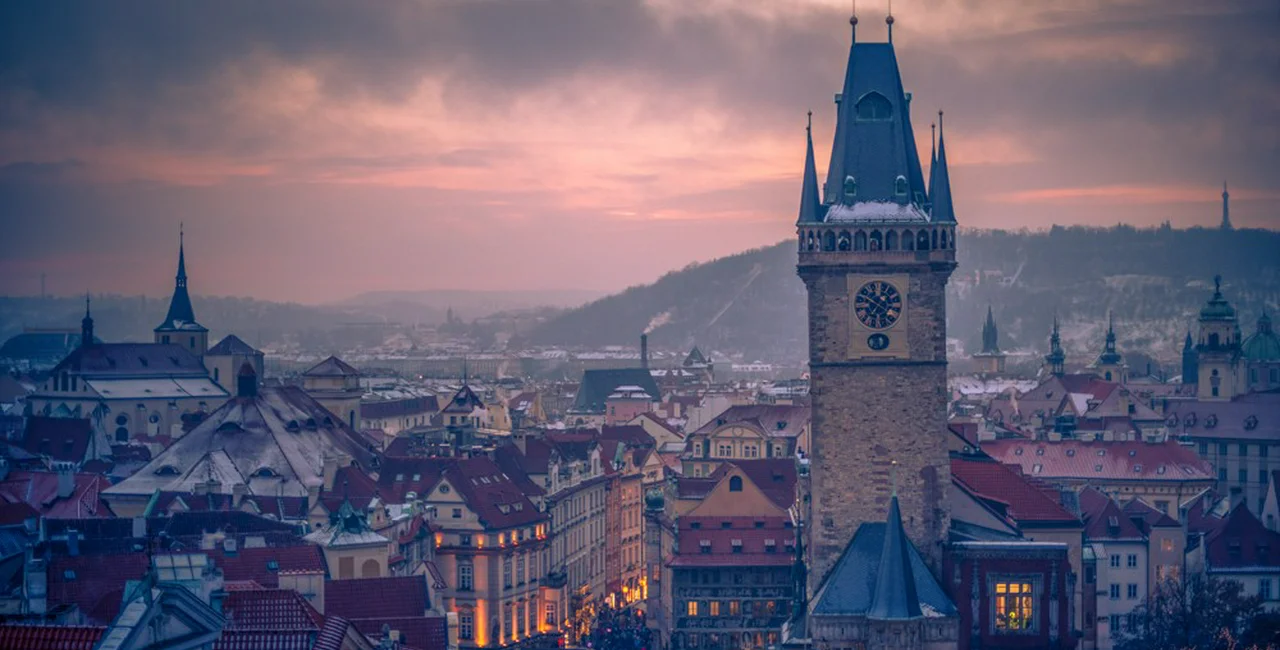Prague’s Old Town Hall is one of the city’s must-see attractions, with its Astronomical Clock on the outside and viewing deck on top of the tower. Its history stretches back almost 900 years.
While it’s impossible to guess how many people wait in crowds to see the hourly procession of saints above the clock, last year 695,000 visitors bought tickets to see inside the hall, with December as the busiest month with 78,000, The largest number of visitors came from Italy, the United States, France, the Czech Republic and Germany.
PARTNER ARTICLE
The complex is no longer the center of Prague’s municipal administration, though some ceremonial events take place there. Since 1945, City Hall has been at nearby Mariánské náměstí.
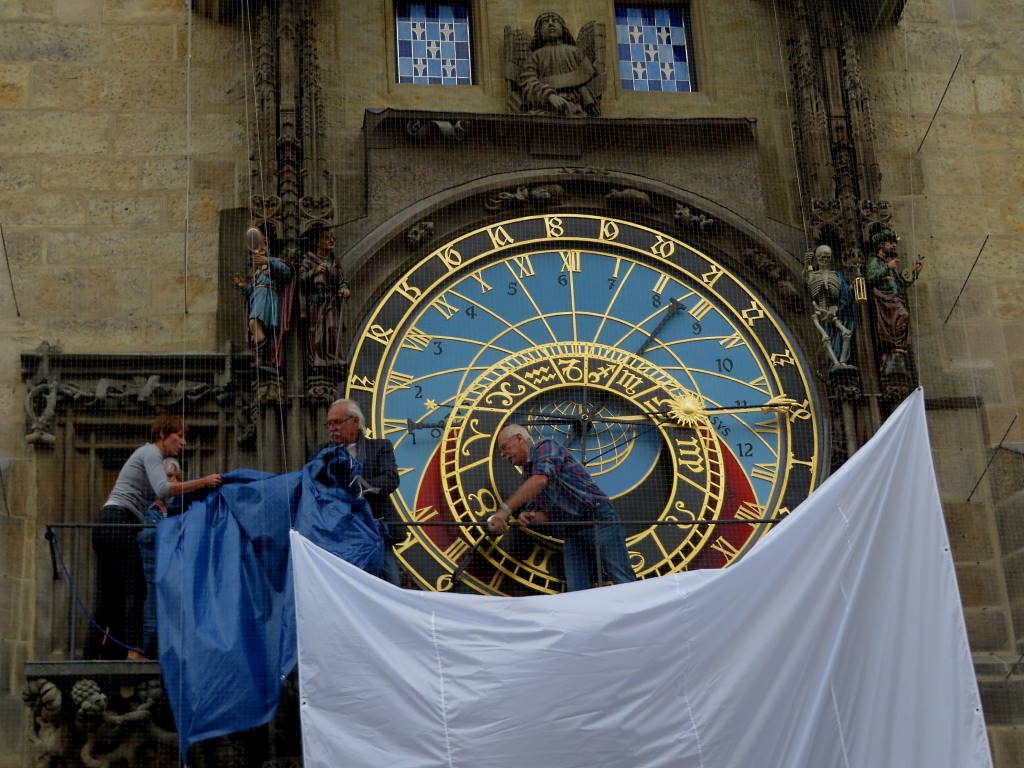
Old Town Hall as we see it today was built over several centuries. The origins of the complex date back to 1338 when the two-story stone Volflin House, already 200 years old, was taken over for city administration, based on authority from John of Luxembourg, the king of Bohemia.
It proved insufficient and slowly adjacent shops were taken over and joined together. The different facades can still be seen. All that remains of the original Volflin House is a fragment of a Gothic doorway
Work on the tower began sometime around 1340 and lasted to 1364. The first version of the Astronomical Clock dates to 1410, though apparently that one functioned poorly and was replaced around 1490.
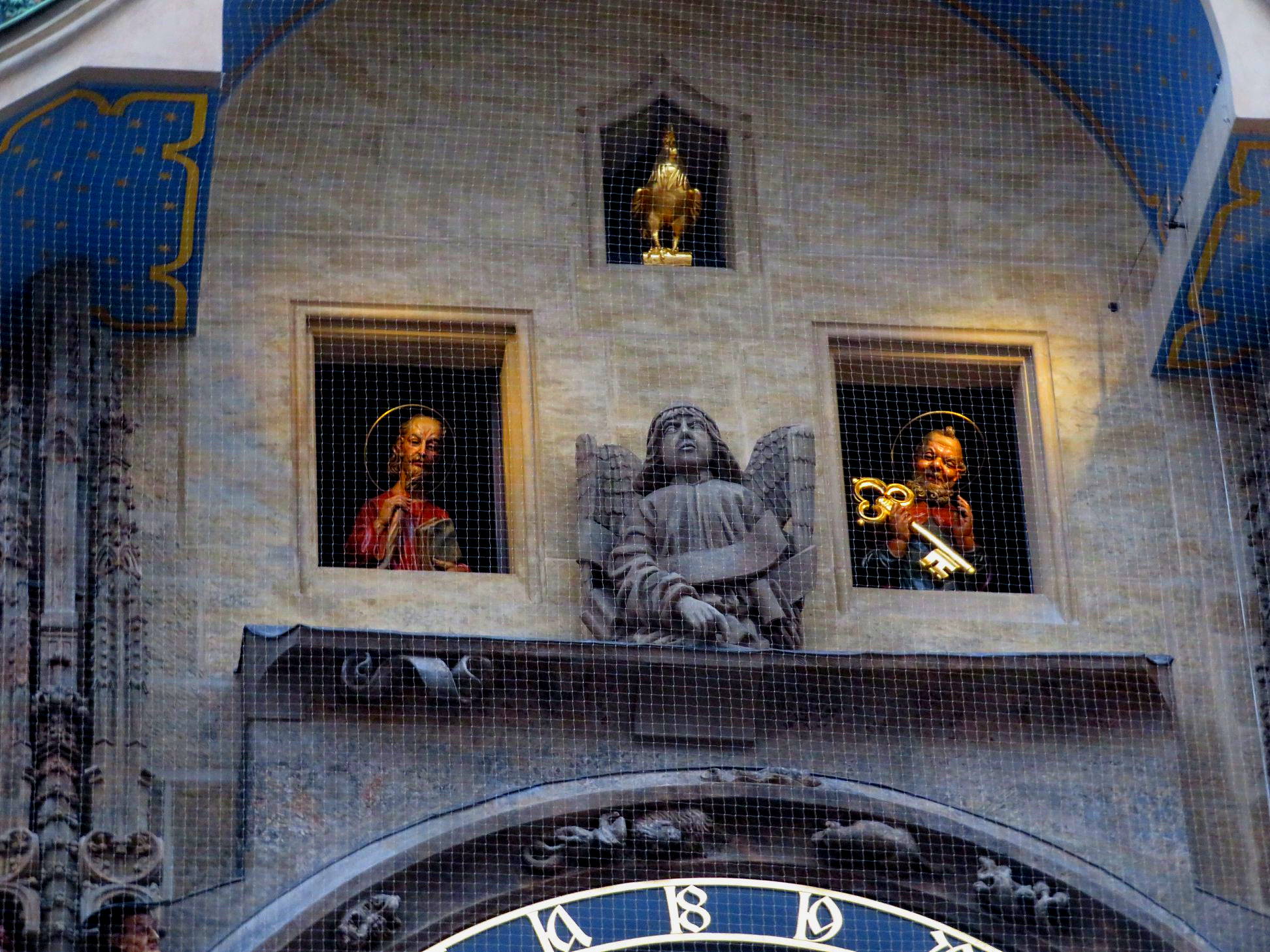
The tower, almost 70 meters tall, was meant to encompass the entire known universe, with the lower level representing the earth, the calendar wheel representing the moon, the Astronomical Clock embodying movement of the sun, and the windows with saints representing the heavens. Sculptures around the clock carry allegorical meanings, and decoding them would fill a book.
A gruesome legend about the clock seems to be untrue. The clockmaker known as Master Hanuš was allegedly blinded after completing the clock so he could never make another. The blind man then took revenge by destroying the gears, and nobody knew how to fix them.
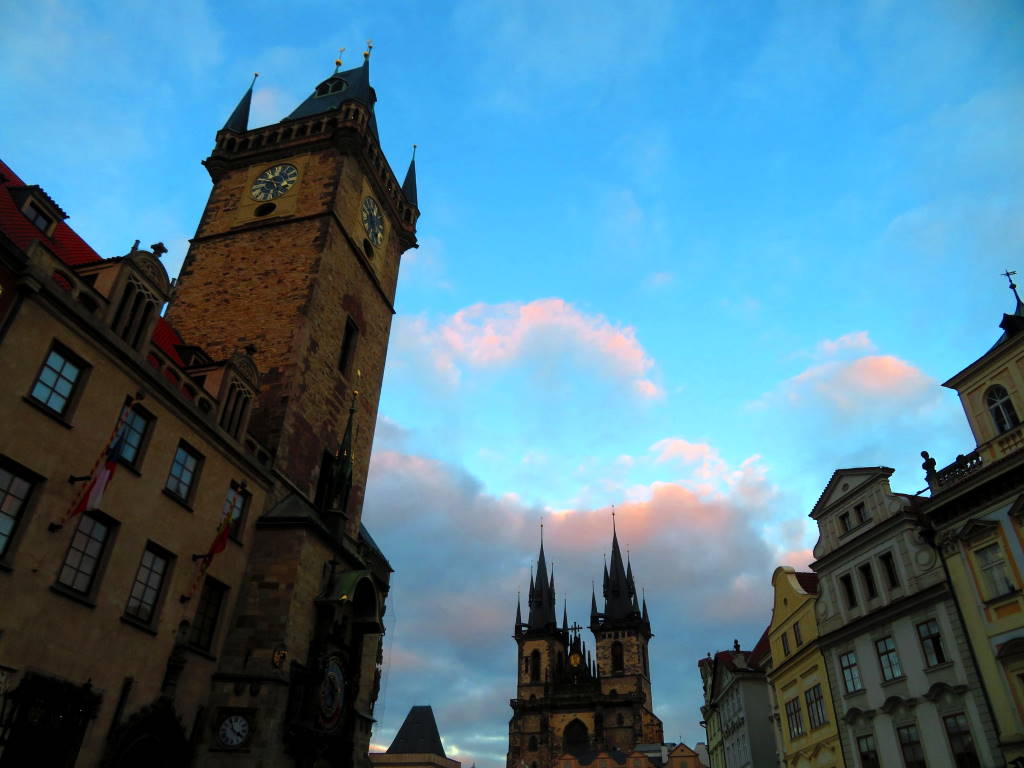
It seems that nobody of that name even worked on the clock, and similar tales were told in many places with fancy town clocks, so it is a bit of an early urban legend.
The expansion of Old Town Hall into neighboring buildings continued into the 19th century, with the last addition being the House at the Minute. This building’s exterior still retains sgraffito designs, two-tone pictures etched into the cement of the facade, from the 17th century showing biblical and mythological figures.
The north side of the clock tower now has a grassy field, but that was the site a romantic-style wing built between 1838 to 1848 by Viennese architects Peter Nobile and Pavel Sprenger. Several medieval buildings were torn down to make room.
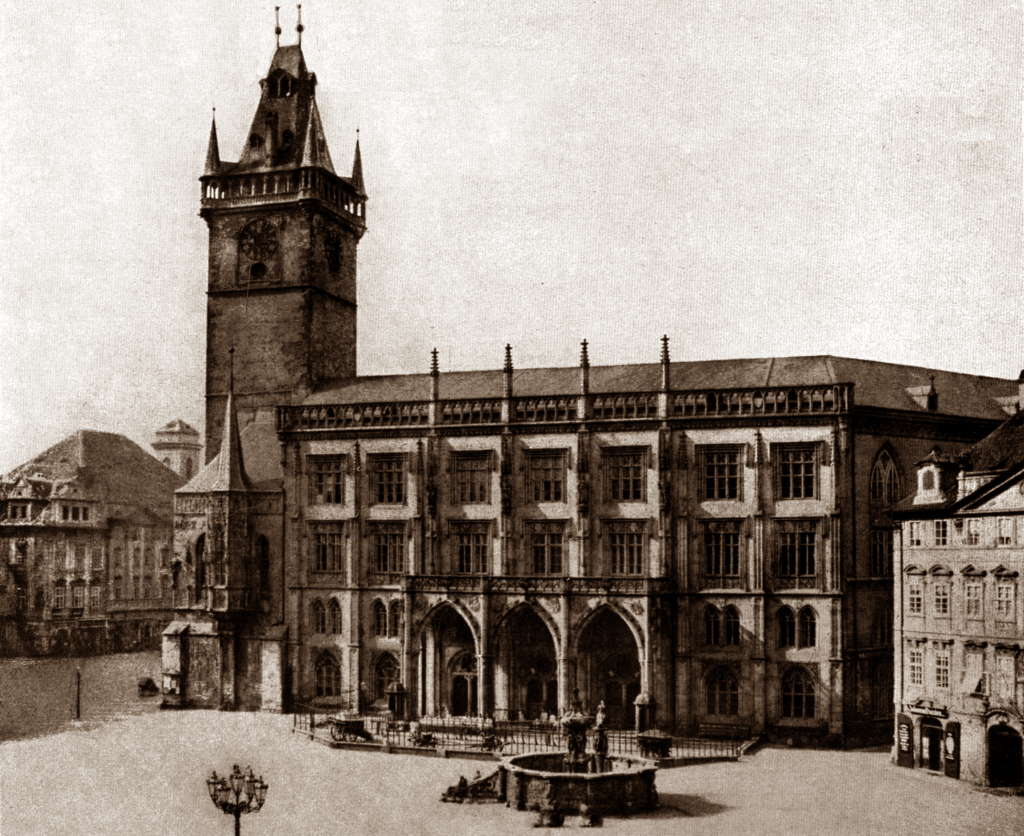
It burned down in the last days of World War II, at the end of the Prague Uprising. Efforts to rebuild it have been mentioned sporadically.
Competitions for filling in the empty lot were held in 1947, 1967, and 1988. Each time, though, the political situation changed and plans were never implemented. That was probably good, as the submitted designs were mostly in the modern functionalist style, and totally out of character with the rest of Old Town Square.
The last effort was in the 2000s, when then-mayor Pavel Bém (ODS) declared the city would hold a competition for architectural plans, but the contest was never held.
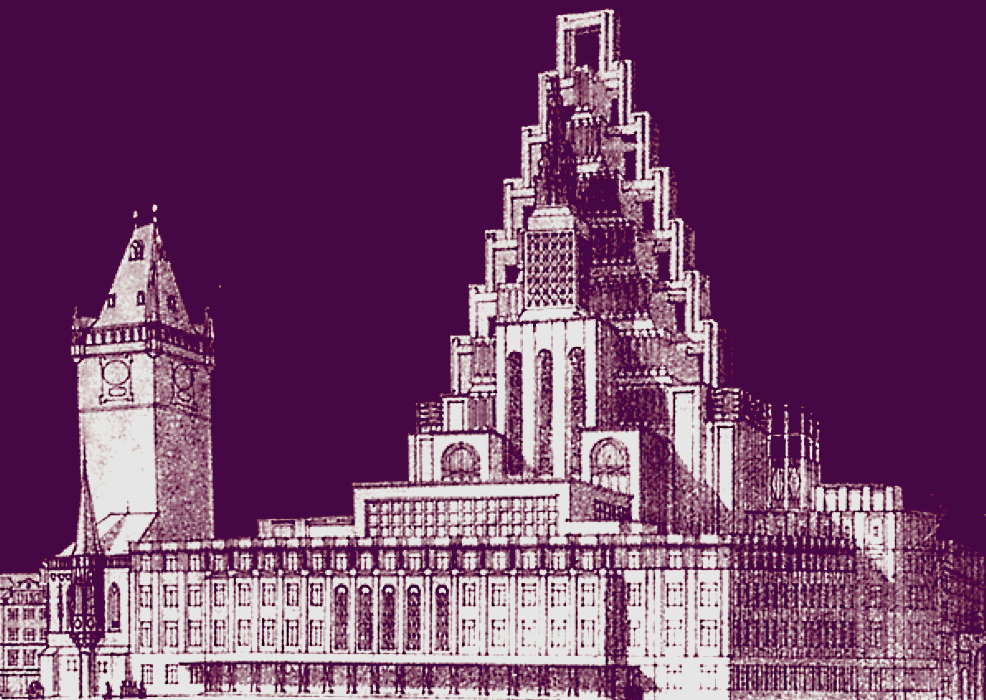
There were also numerous competitions to further expand Old Town Hall before World War II. The most famous design was by Josef Gočár, who designed the House of the Black Madonna and the Saint Wenceslas Church in Vršovice. His plan from 1909 called for a pyramid skyscraper that looks like something from the German film Metropolis. It would have given the city center quite a different complexion.
Inside, the oldest parts of Old Town Hall are the Romanesque and Gothic cellars. The street level used to be lower, but was raised in the 13th century to prevent flooding, making the cellars deeper than they originally were. Part of what are now cellars were originally ground floors, and a blocked doorway in one cellar used to lead to the street. The cellars also served as dungeons.
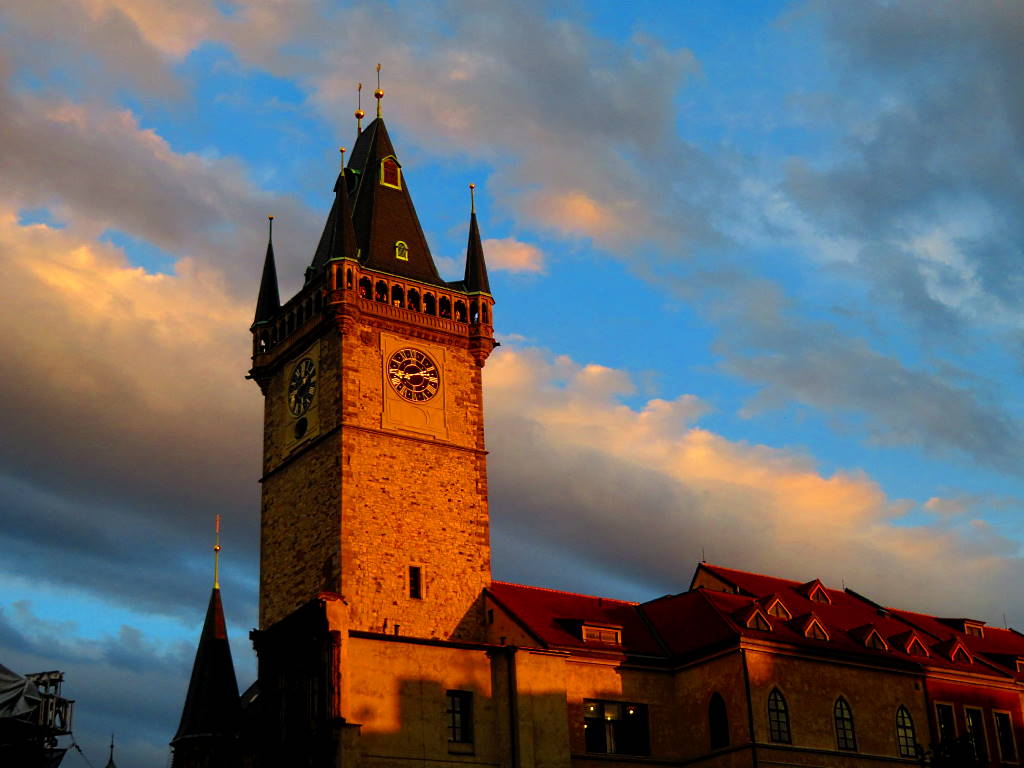
The most significant interior space is the chapel on the first floor. It dates to 1381, but it was also heavily damaged at the end of World War II. A stone portal is original, much of the rest has been rebuilt.
The chapel was renovated in 2018, and an altar from the 19th century, designed by Josef Mocker, was restored from the burnt and damaged fragments. Mocker also oversaw the completion of St Vitus’ Cathedral until his death in 1899.
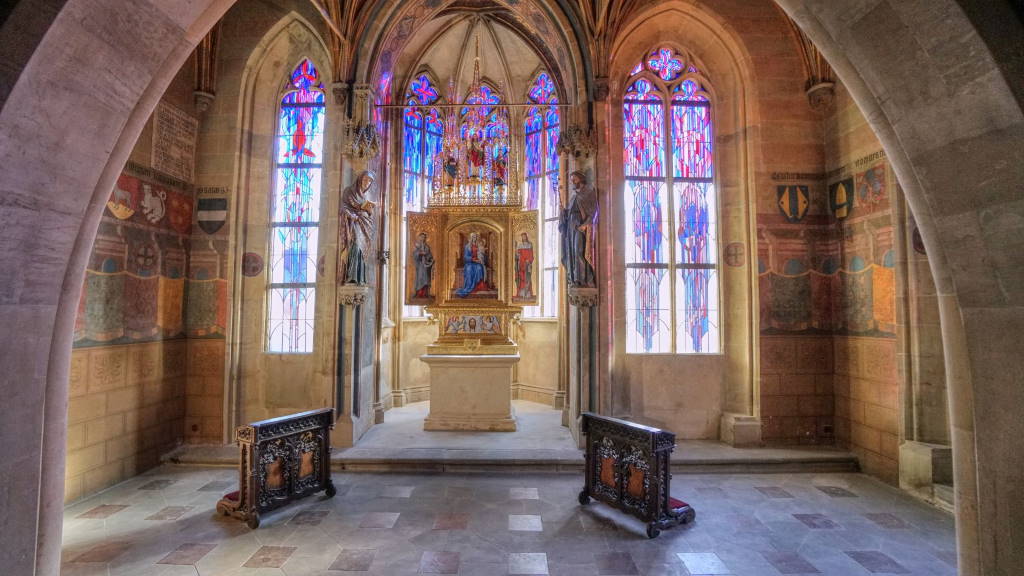
The chapel was taken out of service under the religious reforms of Emperor Joseph II in the late 1700s and used for storage. It was renovated and reconsecrated in 1857, and then modified again 30 years later.
During the 2018 renovations, the tower was stabilized to allow it to handle the high demand of traffic, and modifications to the top viewing gallery were made, restoring some of the decorative elements and also adding barriers to prevent suicide.
Time capsules left behind during the 1949 and 1984 renovations were found in 2018, and a new time capsule with copies of the documents from the old capsules plus new material were hidden somewhere in one of the ceilings.
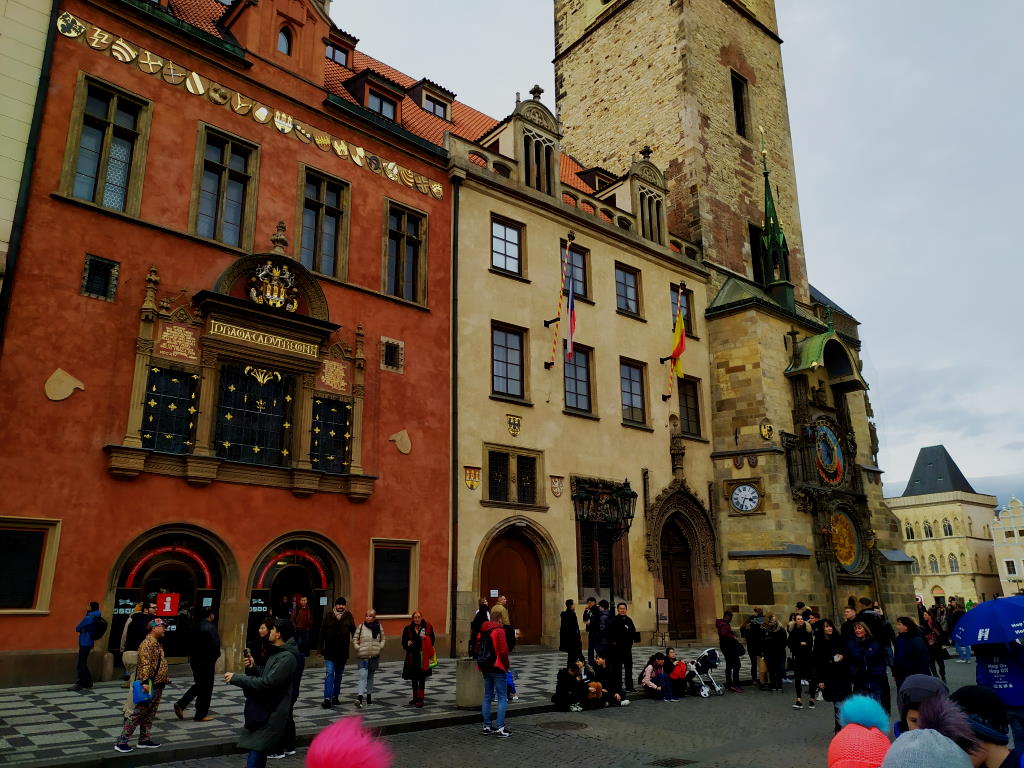
A time capsule letter from 1949, left behind by one of the workers, was critical of the communist regime. It mentioned forced labor and the lack of justice in the so-called workers’ democracy. Criticism of the regime was very dangerous, but leaving a hidden message for the future was one way to at least say something.
The building has borne witness to numerous historical events. In 1422, Hussite leader was executed there, after going to attend a meeting. His supporters figured out something was amiss and stormed the tower. They then carried his head around town on a silver plate to show everyone what happened. A bronze plaque with his bust is on the side of the tower.
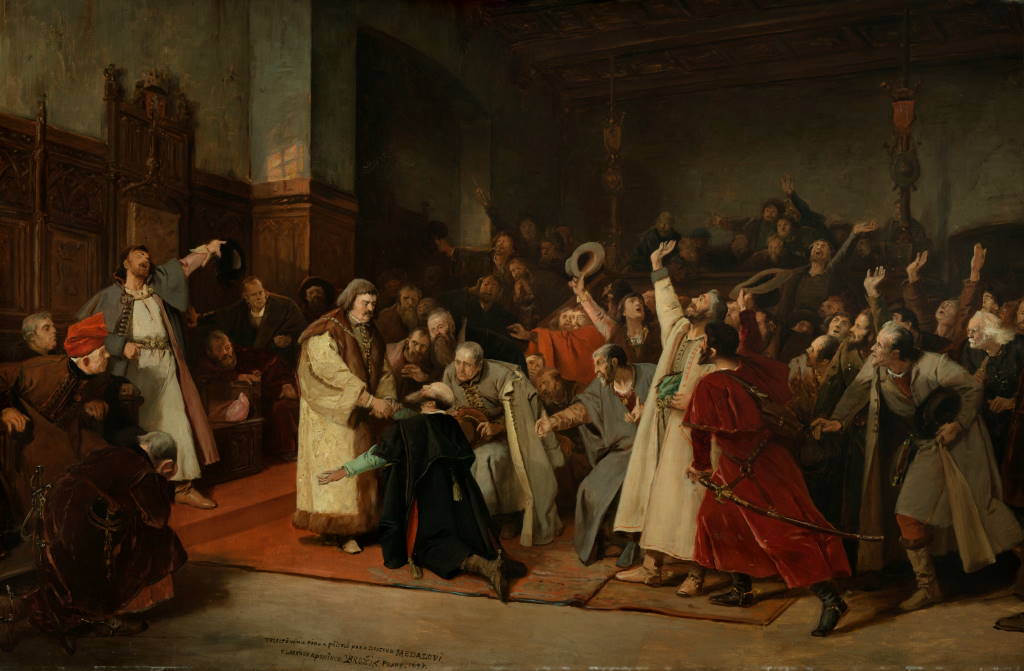
The election of George of Kunštát and Poděbrady (Jiří z Kunštátu a Poděbrad) as king of Bohemia took place in one of the ceremonial halls in 1458. The actual place was in the original northwest wing, which no longer exists. A large painting depicting the event can be found in the the Brožík Assembly Hall. A marble bust of King George is in the George Hall.
He is known for an early attempt to unite Europe under some sort of framework where countries would settle matters peacefully. The idea is seen as a conceptual precursor of the European Union.
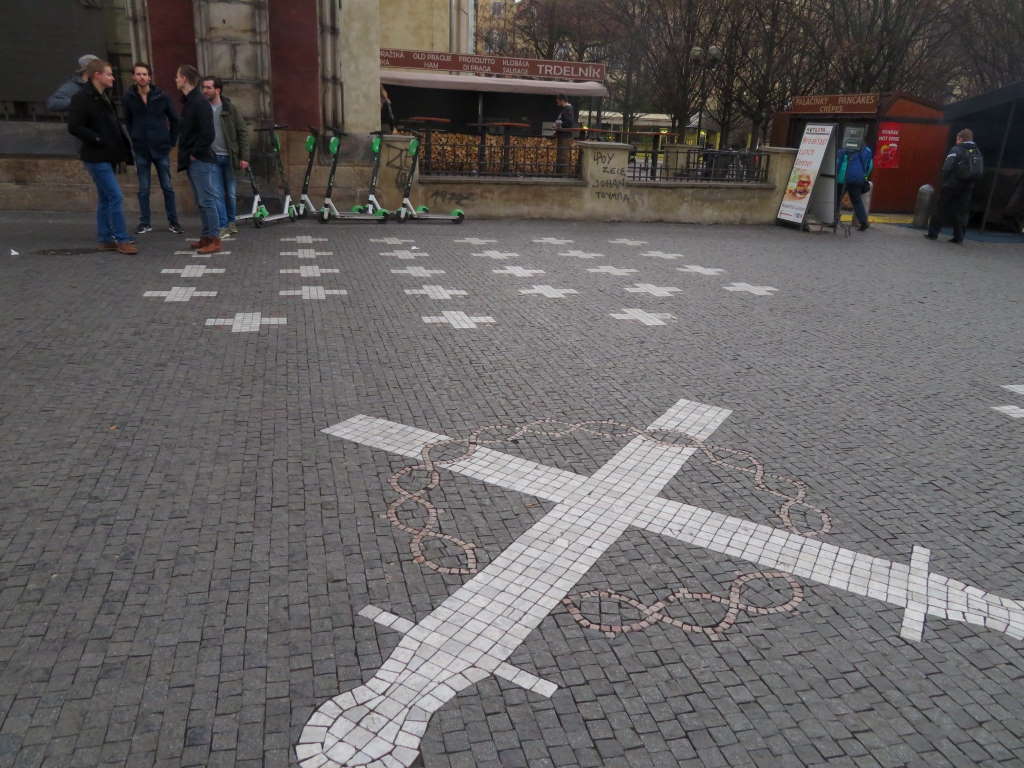
One of the most significant events at Old Town Hall was the execution of 27 leaders of the opposition against the Habsburgs on June 21, 1621, right in front of the building. White crosses in the black pavement commemorate the event.
Throughout much of Prague’s history, the different neighborhoods were independent. Old Town Hall simply oversaw the affairs of Old Town, while New Town Hall took care of New Town and another building oversaw the Castle district. In 1784, the neighborhoods were united, and Old Town Hall took responsibility for the entire city.
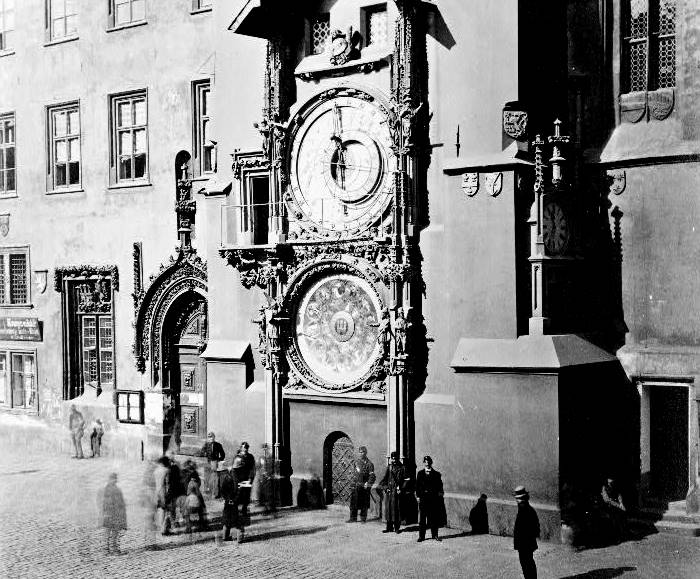
This new series takes an in-depth look at the history of some of Prague major and lesser-known attractions. Got a tip for a Prague place we should look into? Write to us at cs@expats.cz.












 Reading time: 6 minutes
Reading time: 6 minutes 